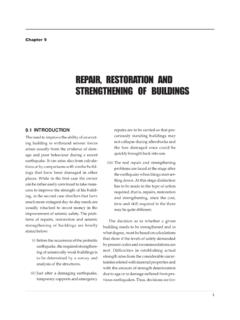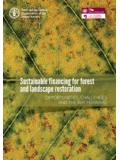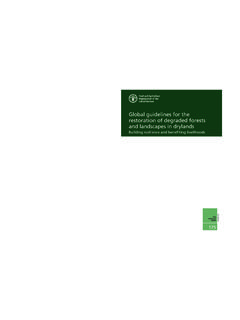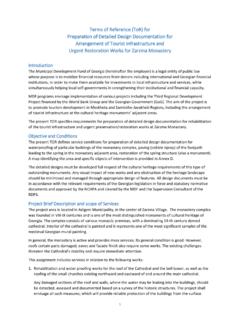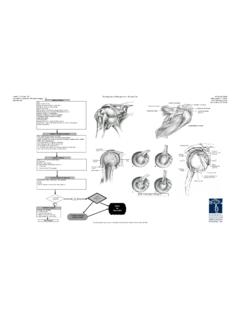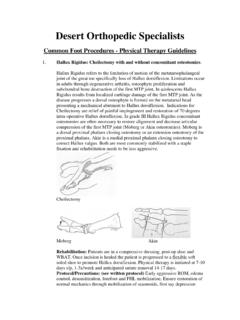Transcription of Future Use of Materials for Dental Restoration - WHO
1 Future Useof Materialsfor DentalRestorationFuture Use of Materials for Dental RestorationReport of the meeting convened at WHO HQ, Geneva, Switzerland16th to 17th November 2009 WHO Library Cataloguing-in-Publication DataFuture use of Materials for Dental Restoration : report of the meeting convened at WHO HQ, Geneva, Switzerland 16th to 17th November 2009 / prepared by Dr. Poul Erik [et al] Materials - analysis. amalgam - restorative use. - adverse effects. 4. Alternative Dental Materials and Glass-ionomer. caries - prevention and control. , Poul Erik. , Ramon. , Stella. , Hiroshi. Oral Health 978 92 4 150064 7 (NLM classification: WU 190) World Health Organization 2010 All rights health information product is intended for a restricted audience only. It may not be reviewed, abstracted, quoted, reproduced, transmitted, distributed, translated or adapted, in part or in whole, in any form or by any designations employed and the presentation of the material in this health information product do not imply the expression of any opinion whatsoever on the part of the World Health Organization concerning the legal status of any country, territory, city or area or of its authorities, or concerning the delimitation of its frontiers or boundaries.
2 Dotted lines on maps represent approximate border lines for which there may not yet be full mention of specific companies or of certain manufacturers products does not imply that they are endorsed or recommended by the World Health Organization in preference to others of a similar nature that are not mentioned. Errors and omissions excepted, the names of proprietary products are distinguished by initial capital World Health Organization does not warrant that the information contained in this health information product is complete and correct and shall not be liable for any damages incurred as a result of its by the WHO Document Production Services, Geneva, Switzerland ContentExecutive summary v1. Introduction The global burden of Dental caries Oral health promotion and disease prevention Dental Restoration WHO Consultation 1997 Dental amalgam and alternative direct restorative Materials Research agenda to improve health Use of Dental amalgam for Restoration Recent major international statements on Dental restorative Materials UNEP initiatives on mercury 62.
3 Objectives of the WHO meeting in 2009 73. Outline of the structure of the meeting 84. Types of Dental restorative Materials Strengths and weaknesses of different Materials Restoration longevity Biological considerations 125. Effects of mercury on health and the environment 126. Best Management Practices (BMP) for amalgam waste 147. Training of Dental health professionals 168. Implications for Future research 169. Country experience African Region Region of the Americas South-East Asia Region European Region Eastern Mediterranean Region Western Pacific Region 2210. Partners in relation to use of Dental restorative Materials The role of the Dental profession The role of the International Association for Dental Research (IADR) The role of UNEP The role of WHO 2511. Summary of discussions at the meeting 2712.
4 Recommendations strengthening the prevention of Dental caries Information available on Materials for Dental Restoration Indicators of success of Restoration Challenges to research Cost of Dental care Health service facilities The providers of Dental care Dental care provider-patient interaction Responsibility of the Dental industry The Dental profession Responsibility of UNEP Responsibility of WHO 3313. Conclusions International Association for Dental Research (IADR) The Dental profession Federation Dentaire Internationale (FDI) Policy makers and public health authorities Third-party payment Manufacturers UNEP WHO 3714. References 41 Annex 1 List of participants 47 Annex 2 Meeting agenda 53 Annex 3 Bibliography - other useful publications 56vFuture Use of Materials for Dental Restoration Executive summaryDental caries is a major public health problem globally.
5 Despite much effort in health promotion and disease prevention, Dental restorations are still needed. Dental amalgam, a restorative material that contains mercury, has been widely used for some 150 years. In the past decades, the awareness and recognition of the environmental implications of mercury have increased and alternative filling Materials have become increasingly more with the World Health Organization (WHO), the United Nations Environment Programme (UNEP) has strengthened the work to reduce risks to human health and the environment from the use and release of mercury. UNEP is supporting the work of the Intergovernmental Negotiating Committee established to elaborate a legally binding instrument on mercury. The mandate of this committee is set out in UNEP Governing Council decision 25/5.
6 In seeking to reduce mercury use and release, the treaty may have implications on the delivery of oral health care this background, the WHO Global Oral Health Programme - in cooperation with UNEP Chemicals - organized a two-day meeting to discuss the implications and the way forward. The aim of the meeting was to assess the scientific evidence available on Dental restorative Materials and the implications to countries of using alternatives to amalgam for Dental restorative participants from 15 countries of all 6 WHO regions attended the meeting, representing international oral health researchers, scientists, university academics, WHO CCs, ministries of health, Non-Governmental Organizations (NGOs), Dental professionals, and UNEP. Following opening statements from Dr Ala Alwan, Assistant Director General, Non-communicable Diseases and Mental Health and Mr Per Bakken, Director, UNEP Chemicals, Dr Poul Erik Petersen outlined the scope, purpose, objectives and structure of the meeting.
7 This was followed by a number of presentations and discussions. Day One discussed the availability of different restorative Materials , and their advantages and disadvantages in Dental care. Experiences from both developed and developing countries of all WHO regions were shared in Day Two, which highlighted the implications for oral healthcare and Future challenges. The meeting considered the importance of strengthening oral health promotion and disease prevention as the strategy to reduce the use of restorative Dental Materials . In case of tooth decay, the best care possible should be provided to meet patients needs. The meeting recognized the variation in Dental practice between countries and the challenges faced by middle- and low-income countries providing Dental care. This will likely result in different approaches to Dental caries management in countries that need to be considered in oral health policy, development and planning viOral Health Programmeof public health programmes.
8 Implications for training of Dental personnel and costs to society as well as the individual are meeting noted that only a few countries had phased out the use of amalgam. If not existing, other countries require systems for waste management to prevent release of mercury to the environment. In several countries Dental amalgam is still widely used. The choice of Materials for Dental caries management in these countries depends on a number of factors such as: the tooth, site and size of the caries lesion, as well as healthcare provision and financing, patient preference, health care provider preference, technology, cost and environmental factors. Following a review of existing evidence and much deliberation, the meeting recognized the huge challenges faced in Dental Restoration , disease prevention and oral health promotion globally.
9 As a result, the meeting considered that all currently existing methods and Materials to manage Dental caries would need to remain available to the Dental profession in the short- and , the meeting noted that while alternative Dental restorative Materials are desirable from an environmental health perspective, a progressive move away from Dental amalgam would be dependent on adequate quality of these Materials . Existing alternative Dental Materials are not ideal due to limitation in durability, fracture resistance, and wear resistance. Therefore, the meeting recognized the need for strengthening of research into the long-term performance, possible adverse effects, and viability of such may be prudent to consider phasing down instead of phasing out of Dental amalgam at this stage.
10 A multi-pronged approach with short-, medium- and long-term strategies should be considered. Alternatives to Dental amalgam exist but the quality of such Materials needs to be further improved for use in public health care. The meeting suggested important strategies that can be put in place while waiting for new Materials to be developed. The role of WHO, UNEP, NGOs such as the International Association for Dental Research (IADR) and the World Dental Federation (FDI), user groups and the industry is critical. A further meeting must be convened to discuss the way forward and to develop strategies to address issues in both developed and developing Use of Materials for Dental Restoration1. The global burden of Dental cariesDental caries (tooth decay) has historically been considered the most important component of the global oral disease burden.










